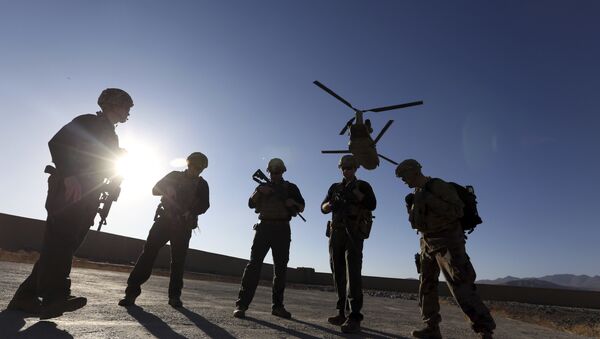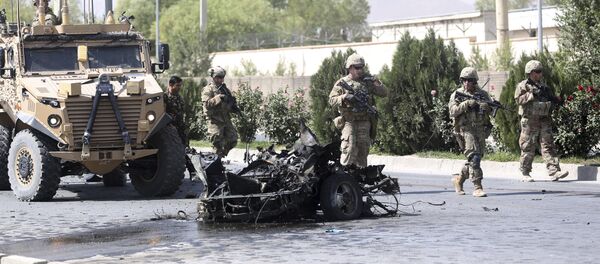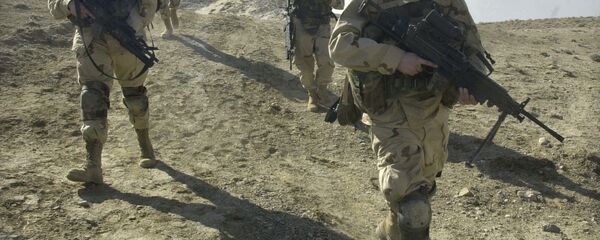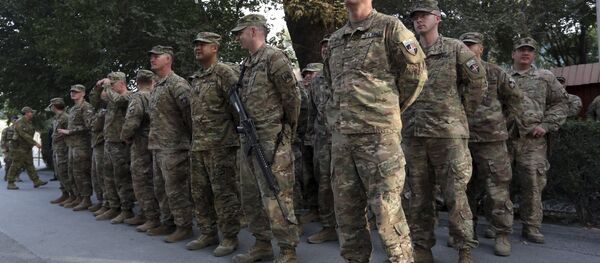For 16 years, the Special Inspector General for Afghanistan Reconstruction (SIGAR) has released quarterly population figures that elaborate on what parts of the country are under insurgent control and which are under the control of government and coalition forces.
Until Monday — when SIGAR reported that they would not be releasing that data with their quarterly report because they had been instructed not to by the Pentagon. According to a report by SIGAR chief John Sopko, the DoD wouldn't even tell them why they were not allowed to release that information.
"The number of districts controlled or influenced by the Afghan government had been one of the last remaining publicly available indicators for members of Congress… and for the American public of how the 16-year-long US effort to secure Afghanistan is faring," Sopko wrote.
SIGAR added that the development was "worrisome," particularly as insurgents have gained ground in Afghanistan in the past few years — therefore making an understanding of the nature of their offensive crucial to analysis and policy. The denial of disclosure, Sopko wrote, is "a fact that should cause even more concern about its disappearance from public disclosure and discussion."
"The implication is that I think the average American who reads our reports or reads your press accounts of it has no meaningful ability to analyze how his money or her money is being spent on Afghanistan," Sopko told Reuters on Tuesday.
"In essence, you can ask me almost any question and I will have to say it is classified or non-releasable. I mean you go down the list, it is just amazing."
When asked about the classification by Stripes, US Forces Afghanistan spokesman Capt. Thomas Gresback seemed to lay the blame with SIGAR, saying the missing information was due to error, not obfuscation. "Somewhere in the data transfer process, SIGAR labeled the population control numbers incorrectly," he said.
As the most up-to-date numbers were several months old, Gresback said, they would not be included in the report. "It was not the intent of Resolute Support to withhold or classify information which was available in prior reports," he said.
This isn't the only piece of information that the DoD has classified: SIGAR was also instructed not to release the numerical strength of Afghan security forces — again, a standard item in their reports. The Trump administration's specific security goals in South Asia were also classified.
In the previous report, for fall 2017, the DoD classified casualty and attrition rates among Afghan security forces, something else that's been included in the report since 2009.
It isn't clear if the DoD will include any of this omitted information in future reports.
Trump's Afghanistan strategy was unveiled in August and is focused on airstrikes to disrupt the Taliban while empowering local security forces to finish the fight against on their own. For fiscal year 2018, Congress appropriated $4.9 billion to support Afghan security forces, compared to $4.2 billion in the previous year and $3.8 billion in 2016.
In November, Gen. John Nicholson, the chief of US forces in Afghanistan, said that 64 percent of Afghanistan is under government control, while 36 percent is either under insurgent control or contested. But the SIGAR report in October claimed that 43 percent of Afghanistan was either under insurgent control or contested.
He added that their goal is to expand government control to 80 percent of the country by the end of 2019. Early figures are less than promising for the fulfillment of this goal, though: SIGAR's report in the summer had 40 percent of the country under Taliban control or contested, meaning the US' enemies have gained ground since Trump announced his new policy.








